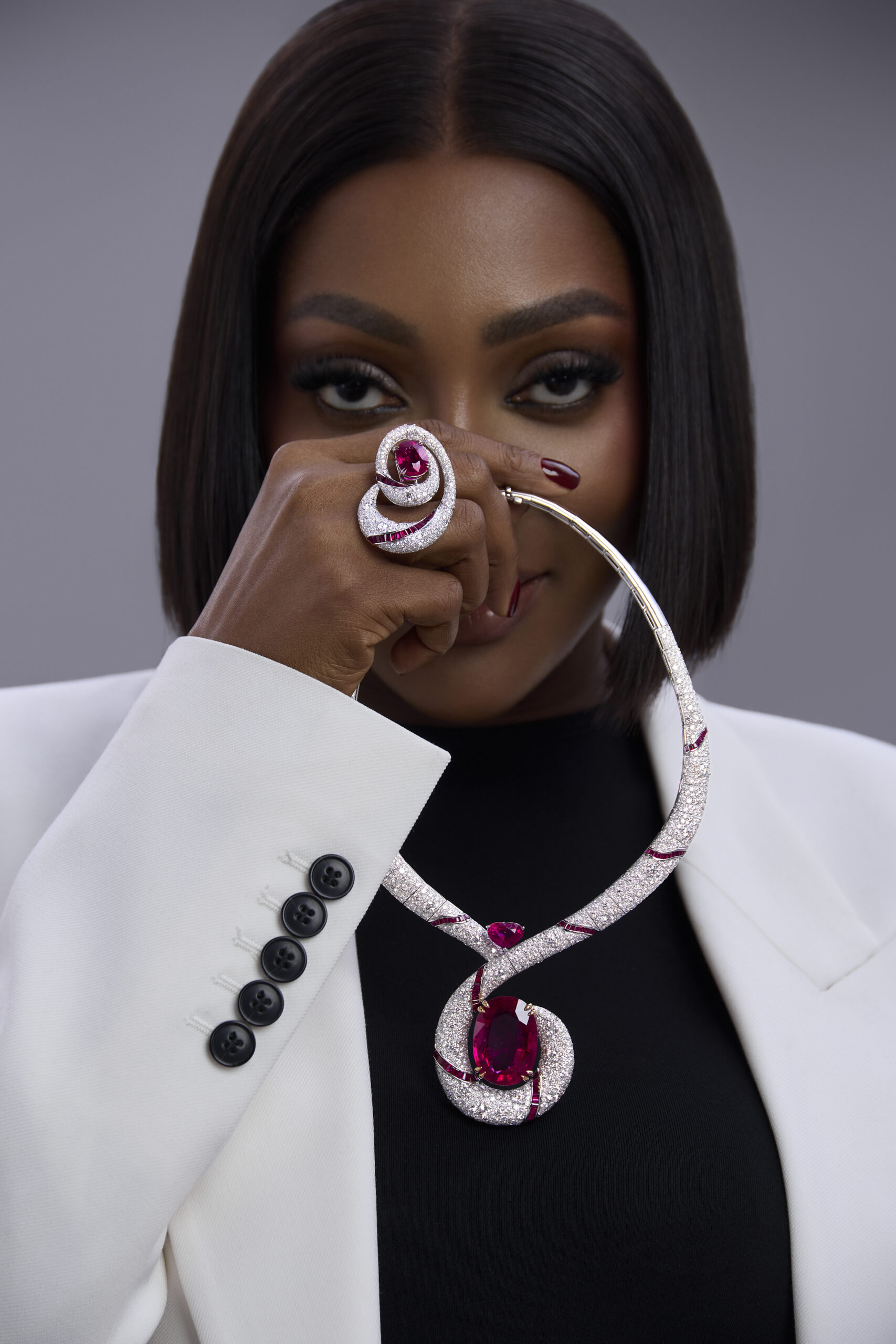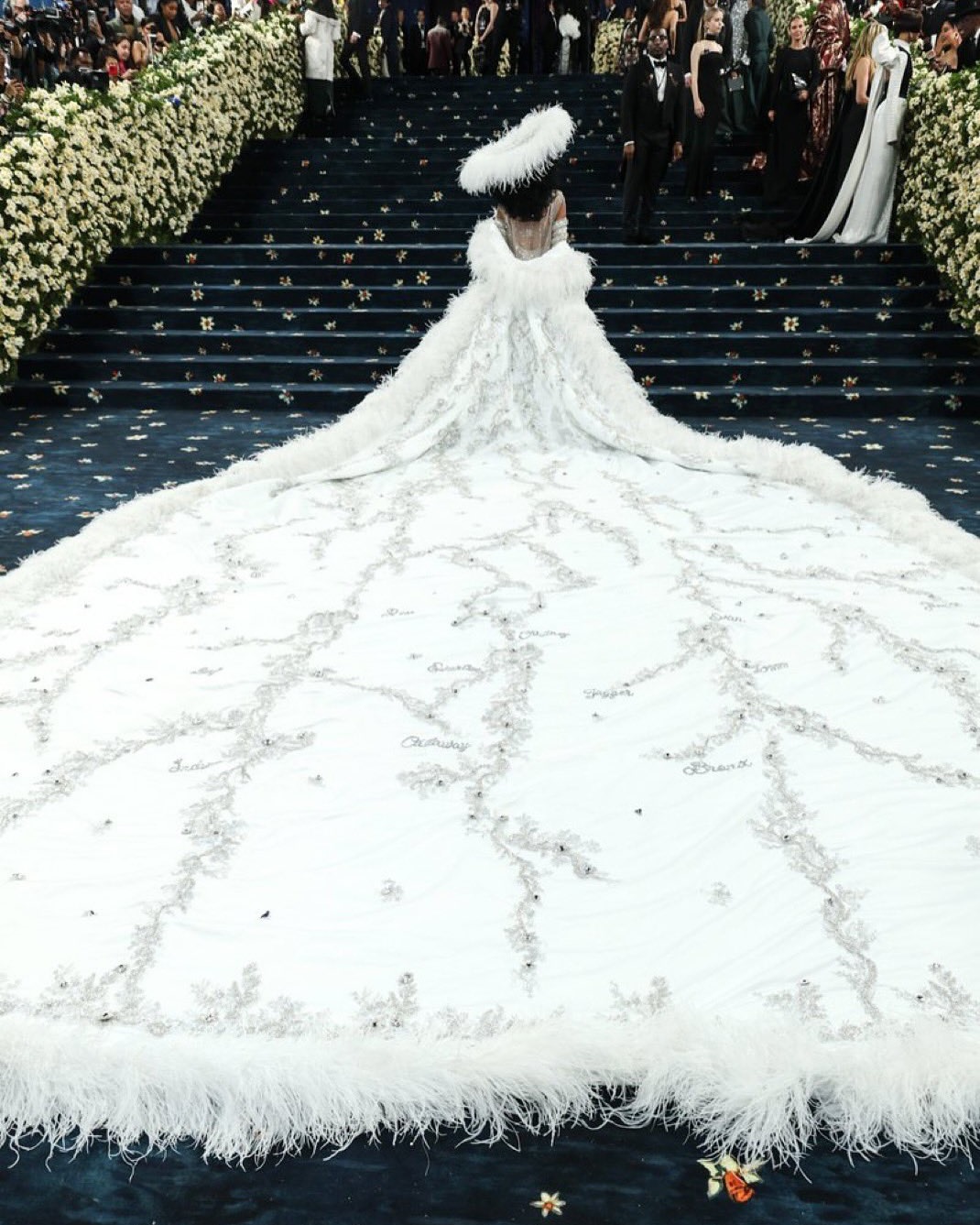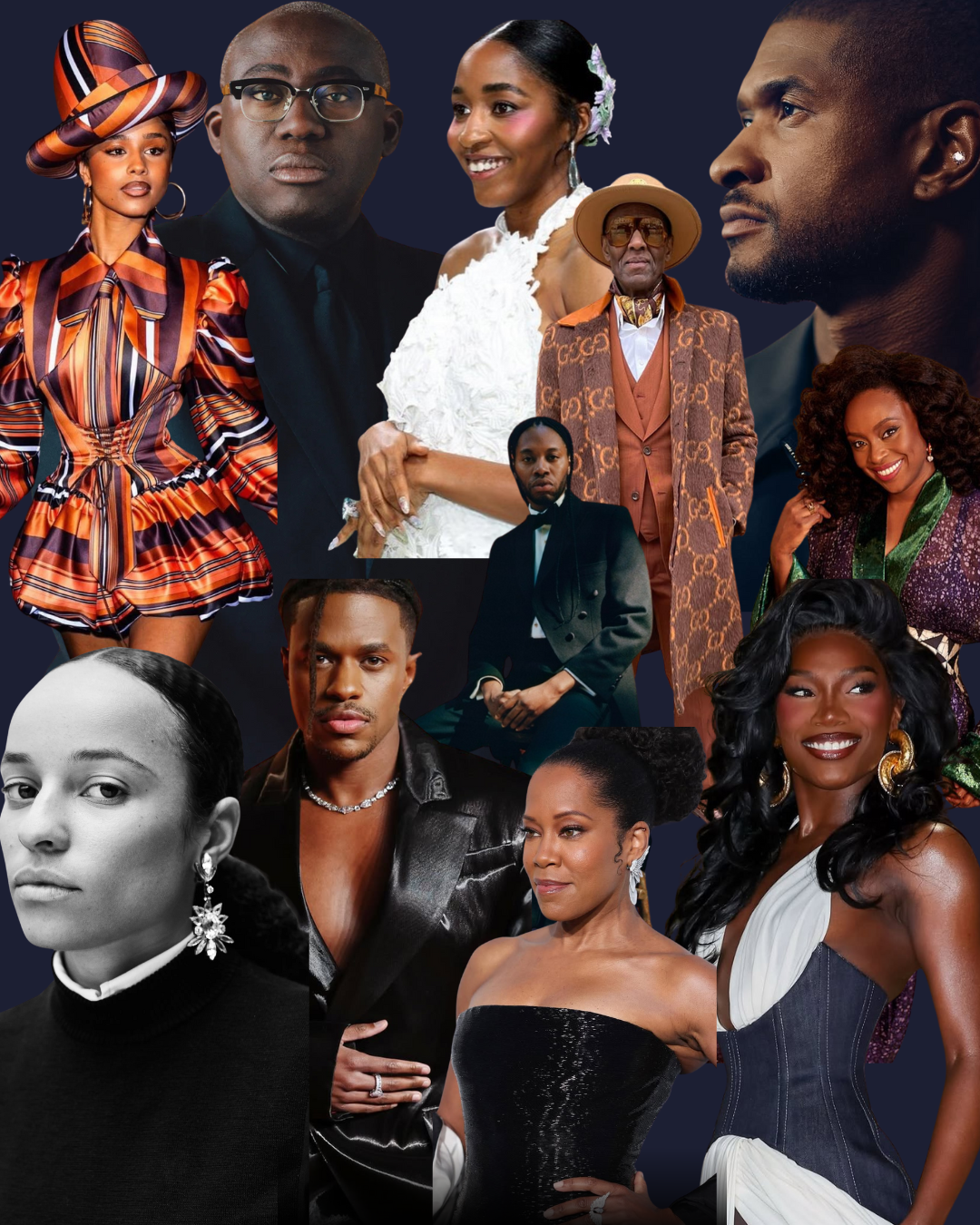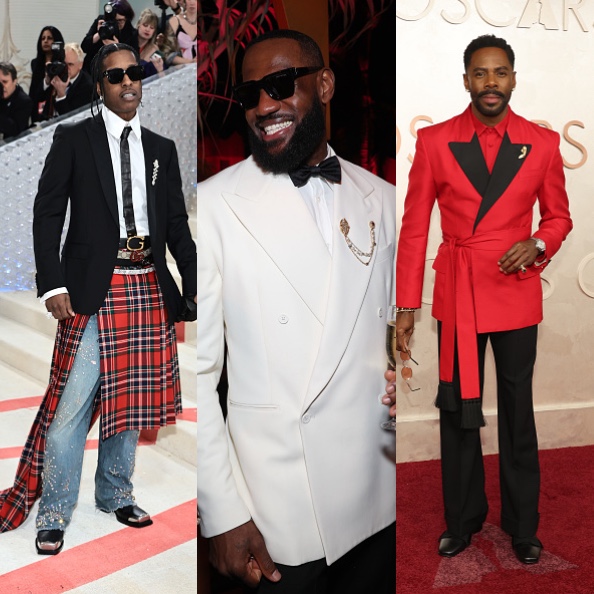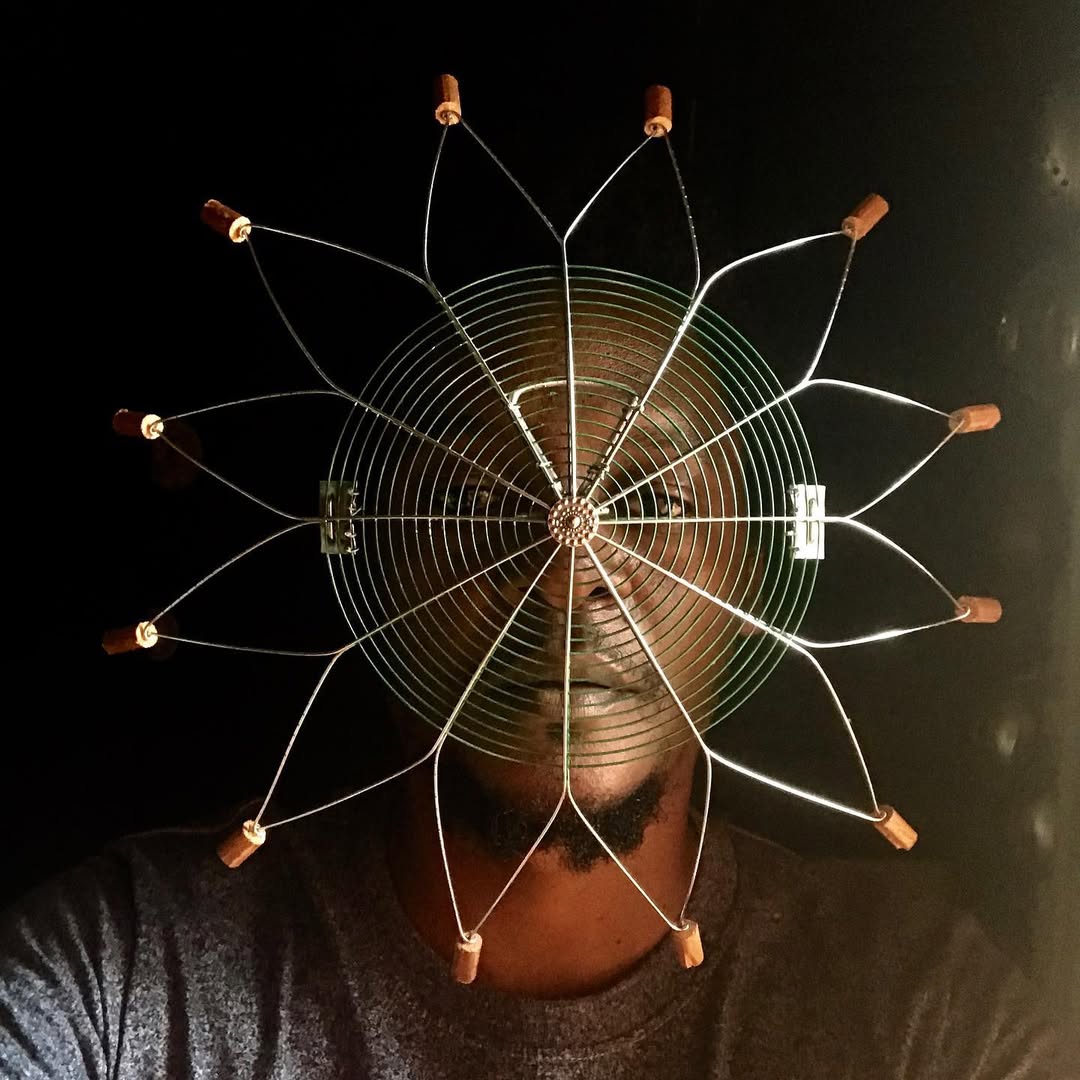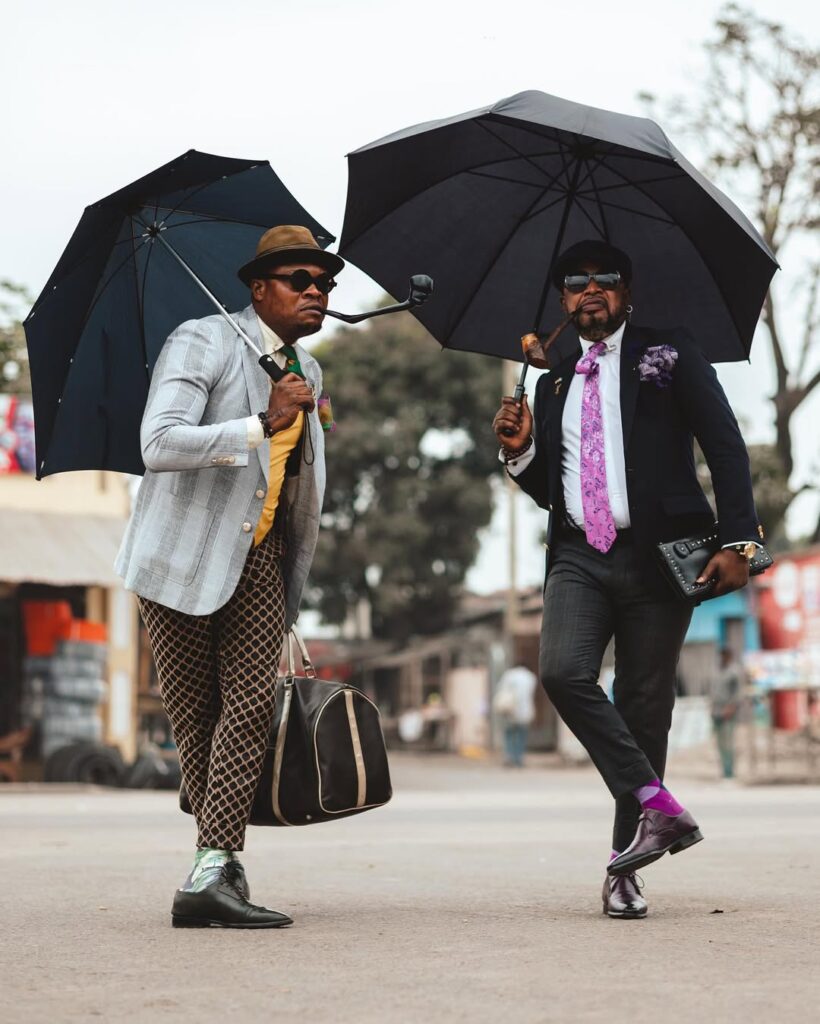
Before a Sapeur steps into the street, the decision has already been made: to show up in the world not just dressed, but composed. Every detail is deliberate—the texture of the suit, the weight of a cane, the tilt of a hat. It’s a ritual of style, but also a quiet refusal. Because in Brazzaville or Kinshasa, elegance has always been more than aesthetics. It’s resistance.
In this third chapter of Threads of Influence, we look at how La Sape—La Société des Ambianceurs et des Personnes Élégantes—became a language of pride, dignity, and power. Born in the shadows of colonial control, the Sapeurs didn’t just wear European suits—they remixed them, redefined them, and used them to demand attention on their own terms.
Elegance as Defiance
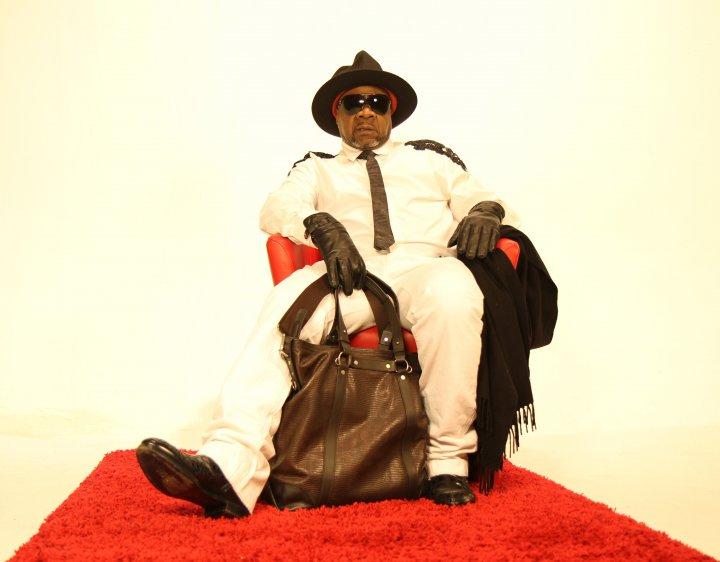
La Sape took shape in the early 20th century, as Congolese men were made to adopt European dress codes under French and Belgian colonial rule. The suit, intended as a symbol of subjugation, became instead a symbol of autonomy. These young men didn’t just wear the clothes—they elevated them. They made style a stance.
In the 1970s, Papa Wemba—singer, style icon, cultural rebel—brought La Sape into the spotlight. He didn’t just dress well; he dressed loud. Tailored suits, silk scarves, bold color clashes, designer labels worn not as luxury, but as armor. Through Wemba, the Sapeur became a figure of glamour and grit—unapologetically African and unbothered by the gaze of the West.
The World Took Notice
The global fashion world didn’t fully catch on until the 2000s. When Daniele Tamagni’s photo book Gentlemen of Bacongo was released in 2009, it introduced a wider audience to the artistry of the Sapeurs. The images were unforgettable—flashes of color and confidence against the rough texture of Brazzaville’s streets.
Then came the Guinness “Made of More” campaign in 2014. It didn’t romanticize poverty. It showcased pride. It said: we don’t need runways to command presence. That message resonated. Suddenly, La Sape was being studied, featured, and borrowed from across continents.
Artists like Burna Boy, Skepta, and Solange tapped into that energy—not as costume, but as connection. Because at its core, La Sape is about dignity. It’s about turning the act of getting dressed into a declaration.
Congo’s Fashion Ecosystem

What’s often overlooked is how La Sape has influenced Congo’s fashion economy from the ground up. Most of the tailoring is still local. The design scene is largely self-sustained—driven by artisans, not factories. In a country still healing from deep political and economic fractures, that’s its own kind of resilience.
According to Statista, Congo’s fashion sector is projected to generate over $11.75 million in 2025. But that number doesn’t tell the full story. What’s happening on the ground—in sewing shops, in street-side fittings, in conversations between generations—is far more powerful.
Congo Fashion Week, founded by Marie-France Idikayi in 2011, has helped turn these local expressions into global conversations. Designers like Maguy Mbaka Guy and Richie Maya are redefining what Congolese fashion looks like—not by chasing trends, but by building on legacy.
The Code of a Sapeur

There’s no handbook. No formal membership. Becoming a Sapeur is about embodying a set of values—grace, confidence, and precision. It’s mentorship and performance. It’s knowing how to wear a suit, and how to wear it like no one else.
Young boys learn from elders. Elders pass down knowledge in public squares and sidewalk salons. And over time, each Sapeur develops their own signature—one that honors the roots while reshaping the silhouette.
This is fashion without an audience. It’s for the self. And maybe that’s what makes it so powerful.
Closing the Thread
Like the Swenkas in South Africa, the Sapeurs remind us that style isn’t a luxury. It’s a form of survival. A way to reclaim space and respect in a world that often denies both.
To be seen on your own terms. To dress not just to impress, but to insist. That’s the quiet power of rebellious elegance.
And that’s why the Sapeurs belong in this thread.
